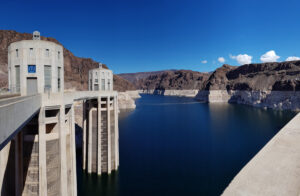The traditional Thanksgiving celebration is centered around the blessings of harvest. Farmers have an obvious connection because of their year-long efforts to grow the food that we all bring home to our families. Like most Americans, we are thankful for the food on our plates and the people who make it possible.
This Thanksgiving will be a bigger challenge for a lot of families because of higher food prices and fewer choices at the store. According to the Consumer Price Index, food prices in general have been 4.6 percent higher since September of 2020. Meat prices rose the most, up 12.6 percent, followed by fish and other seafood at a 10.7 percent increase and higher prices for fruits and vegetables and other grocery staples.
“Food prices, along with prices of a lot of other goods, are rising and that means Thanksgiving dinner, along with all of our other meals, are more expensive than they were a year ago,” said Purdue Professor in the Department of Agricultural Economics, Joseph Balagtas, on the news outlet wlfi.com in West Lafayette, Indiana.
Price increases are also affecting food banks and pantries. According to the Marin Independent Journal, the San Francisco-Marin Food Bank has seen an 80 percent increase in the prices they pay for poultry and other items they stock for underserved communities.
According to the Marin IJ, approximately 60% of the food the nonprofit distributes is fresh fruits and vegetables. For the first quarter this year, the food bank is about $400,000 over budget on produce, and about $75,000 on eggs.
Connecting the dots between the food bank shortages and local farmers, the Marin County Agricultural Commissioner said that water supply shortages due to the drought have resulted in reduced acreage of some farm crops. He encouraged residents to buy local to help maintain the viability of the county’s agricultural community.
Water shortages this year caused a steep decline in the number of acres in California planted to processing tomatoes. Between January 18 and May 26, the wholesale price of tomato paste rose 31 percent, and crushed tomatoes rose 22 percent. That’s important for two reasons. Processed tomatoes are used in a large number of foods we buy, from ketchup to salsa to spaghetti sauce, as well as soups, stews, and many other foods found in restaurants and at the grocery store.
Secondly, it is important because California grows more processing tomatoes than any other state in the nation. The No. 2 state is Indiana, which in 2020 grew 389,000 tons of processing tomatoes. That same year, California grew over 12 million tons, or 30 times the production of the Hoosier State because, like most other states, Indiana simply doesn’t have the acreage or climate to come close to the production that’s possible in California. What happens to all those products you buy every day if California can’t produce the amount of tomatoes it does now? You can expect shortages, or higher prices, or less safe imports or all three.
Other examples of fresh fruit and vegetables grown in greater abundance in California are grapes (17 times the production of No. 2, Washington), peaches (6 times the production of No. 2, South Carolina), and lettuce (almost 3 times the production of No. 2, Arizona).
California grows food in greater abundance than anywhere else in the U.S. because we have better soils and the only Mediterranean climate in North America. Most other states face more significant weather extremes, higher altitudes, oppressive humidity, and in some cases, too much water, which limits their ability to grow the same kinds of crops in the quantities that come from California.
Because California is a global leader in food safety, reliability, diversity, quality, and abundance, our leaders should be doing everything possible to support farmers here in California.
We’re already aware that supply chain issues have led to shortages and higher prices at the grocery store, and it only makes sense to keep that chain as short as possible. Imagine a future where much of our food is sitting in container ships off the coast of Los Angeles, waiting to be unloaded while prices at the grocery store rise and the quality of the food on-board declines. Local, California-produced food gives us the assurance that we’re not depending on other states or countries to grow the things we want here.
Politics, more than weather, affects the amount of water farmers have to grow our food. We must ensure that our water supply infrastructure is operating as efficiently as possible to meet the critical health, safety, and nutritional needs of all Californians.
The infrastructure bill signed recently by President Biden includes $3.2 billion to repair and upgrade aging infrastructure. There is another $1.5 billion for new storage projects, including groundwater storage and floodplain management. It’s a start but more needs to be done at the State level to assure consumers that our farms have the water needed to avoid future food shortages and unaffordable price increases.
Thanksgiving is a time to look back and appreciate all that we have. California does many things well, which is why it is the fifth largest economy in the world. Agriculture is a big part of that and, as Californians, we’re fortunate that our farmers can grow almost everything we need and in quantities that are the envy of the world. But it takes water to do that and with the right support from our elected leaders, farming in California will continue to lead the world in food safety, reliability, diversity, quality, and abundance.
That’s something for which we can all be thankful.



